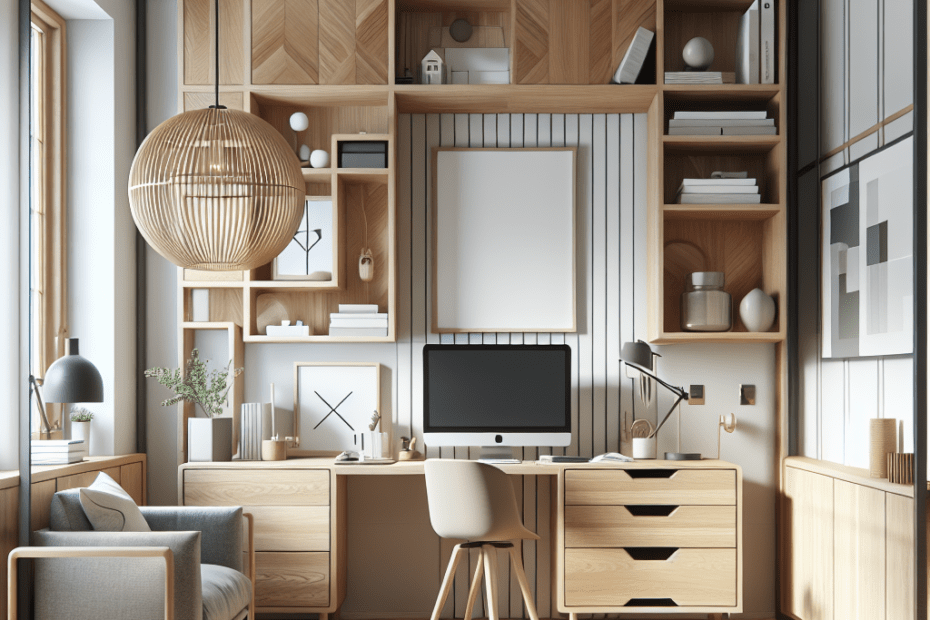“`html
Designing a Home Office with Scandinavian Simplicity
Scandinavian home office design is becoming increasingly popular for those looking to create a workspace that is both functional and aesthetically pleasing. This design style, characterized by simplicity, minimalism, and functionality, provides a sense of tranquility that is perfect for productive work environments. With more people working from home than ever before, largely due to the global trend in remote work, many are seeking design solutions that promote efficiency and peace. According to a recent survey by Statista, 42% of the global workforce is now working remotely at least part-time, making a comfortable home office essential for productivity.
Key Principles of Scandinavian Design
The core principles of Scandinavian design include simplicity, functionality, and connection to nature. These principles create a streamlined and clutter-free workspace. By incorporating natural materials like wood and leather, and a color palette that features whites, grays, and earth tones, designers can create a calming atmosphere that promotes focus and creativity.
| Scandinavian Design Principle | Description |
|---|---|
| Simplicity | Focuses on clean lines and decluttered spaces. |
| Functionality | Ensures every piece has a practical use. |
| Connection to Nature | Incorporates natural materials like wood. |
Incorporating Furniture and Accessories
When designing a Scandinavian home office, furniture choice is crucial. Opt for minimalistic desks and ergonomic chairs that prioritize comfort without sacrificing style. The use of ergonomic furniture not only adheres to functional principles but also supports health and productivity. According to a study published by NCBI, ergonomic sitting can reduce back pain by 54% in office settings.
Accessories should be minimal but meaningful. Items like lamps, small plants, or artwork can add personal touches while maintaining the simplicity. Lighting is essential in Scandinavian design; thus, maximizing natural light through strategically placed windows or using soft, ambient lighting creates a warm and inviting atmosphere.
Color Palette and Material Choices
Scandinavian design often features a neutral color palette. Whites, grays, and beige set the tone, while soft pastel accents can be introduced for warmth. Natural materials like wood, leather, and cotton help ground the space, making it feel cozy and welcoming. The use of natural textures aligns with the biophilic design concept, connecting inhabitants with nature, which can reduce stress and increase job satisfaction.
Challenges and Solutions in Scandinavian Design
One challenge of the Scandinavian design is the risk of creating a space that feels too cold or stark. To mitigate this, they can introduce various textures and layers, such as wool throws or textured rugs, to add warmth. Additionally, personalizing the workspace with family photos or other sentimental items can keep it from feeling impersonal.
Practical Example of Scandinavian Home Office Design
They can imagine a home office with a sleek wooden desk placed near a window to capitalize on natural light. A white adjustable chair sits nearby, offering comfort throughout long work hours. A desk lamp with a soft glow complements the natural light, while a simple bookshelf holds only essential items, keeping the area organized and clutter-free. Light-colored curtains frame the window, enhancing the room’s openness and airiness. Finally, a few potted plants add a splash of green, bringing the feeling of nature indoors.
Key Takeaways
- Scandinavian home office design emphasizes simplicity and functionality.
- Natural materials and a neutral color palette create a peaceful workspace.
- Ergonomic furniture and proper lighting are essential for health and productivity.
- Personal touches and textures add warmth and personality.
- Designing with Scandinavian principles can boost focus and reduce stress.
FAQ
1. What is the main focus of Scandinavian home office design?
The main focus is on simplicity, functionality, and creating a relaxing atmosphere through minimalism and natural elements.
2. How does the choice of color affect the design?
Neutral colors like whites, grays, and beiges provide a calming backdrop, while pastel accents and natural textures enhance warmth and interest.
3. Why is ergonomic furniture important?
Ergonomic furniture promotes health by reducing stress on the body, which can increase productivity and reduce the risk of strain-related injuries.
4. How can they personalize a Scandinavian-style home office?
They can personalize it by adding meaningful accessories like small plants, artwork, or photos, ensuring these additions do not overwhelm the space.
5. What is a common challenge with Scandinavian design, and how can it be overcome?
A common challenge is the space may feel too cold. This can be overcome by incorporating warm textures and personal items, such as rugs or photos.
“`
This blog post is optimized for SEO around the topic of “Scandinavian Home Office Design,” and it includes relevant information, statistics, and practical examples to engage readers and provide valuable insights.
